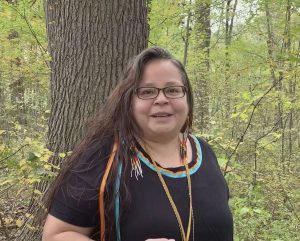The Importance of Land-Based Education
The Importance of Land-Based Education
Topic 1 – The Importance of Land-Based Education

One of the most fundamental and basic principles of Indigenous pedagogies is the interconnectedness to the land. The land is essentially inseparable from all learning, all elements of life, and embedded in spirit—hence the significance of the term—Mother Earth.
Some Indigenous languages also reflect this, which is why it is so tragic that so much loss has occurred from the effects of colonization in this area. The English language is immersed and positioned around the use of nouns and possessiveness. Robin Wall Kimmerer, a botanist fully immersed in the tools of science and a decorated professor, who is also an enrolled member of the Citizen Potawatomi Nation, shares a particularly striking passage in her book Braiding Sweetgrass, that helps to illustrate this interconnectedness that doesn’t exist within the English language. According to Dr Kimmerer, approximately 30% of words in English are verbs and in Potawatomi, that number rises to approximately 70% (2013, p. 53). This is significant as it accounts for experiencing the world rather than possessing it. We are going to share her entire passage, as any less, with paraphrasing, would do the concept a great injustice.
“European languages often assign gender to nouns, but Potawatomi does not divide the world into masculine or feminine. Nouns and verbs are both animate and inanimate.” …
“In that moment I could smell the water of the bay, watch it rock against the shore and hear it sift onto the sand. A bay is a noun only if the water is dead. When bay is a noun, it is defined by humans, trapped between its shores and contained by the word. But the verb wiikwegamaa – to be a bay – releases the water from bondage and lets it live. “To be a bay” holds the wonder that, for this moment, the living water has decided to shelter itself between these shores, conversing with cedar roots and a flock of baby mergansers. Because it could do otherwise – become a stream or an ocean or a waterfall, and there are verbs for that, too. To be a hill, to be a sandy beach, to be a Saturday, all are possible verbs in a world where everything is alive. Water, land, and even a day, the language a mirror for seeing the animacy of the world, the life that pulses through all things, through pines and nuthatches and mushrooms. This is the language I hear in the woods; this is the language that lets us speak of what wells up all around us. And the vestiges of boarding schools, the soap-wielding missionary wraiths, hang their heads in defeat” (Kimmerer, 2013, p. 55).
Jaimie explains one of her land-based lessons at the Black Oak Heritage Park as an example of land-based pedagogies in the following video (5:28).
Reference:
Kimmerer, R. W. (2013). Braiding sweetgrass (1st ed.). Minneapolis, Minnesota: Milkweed Editions.

